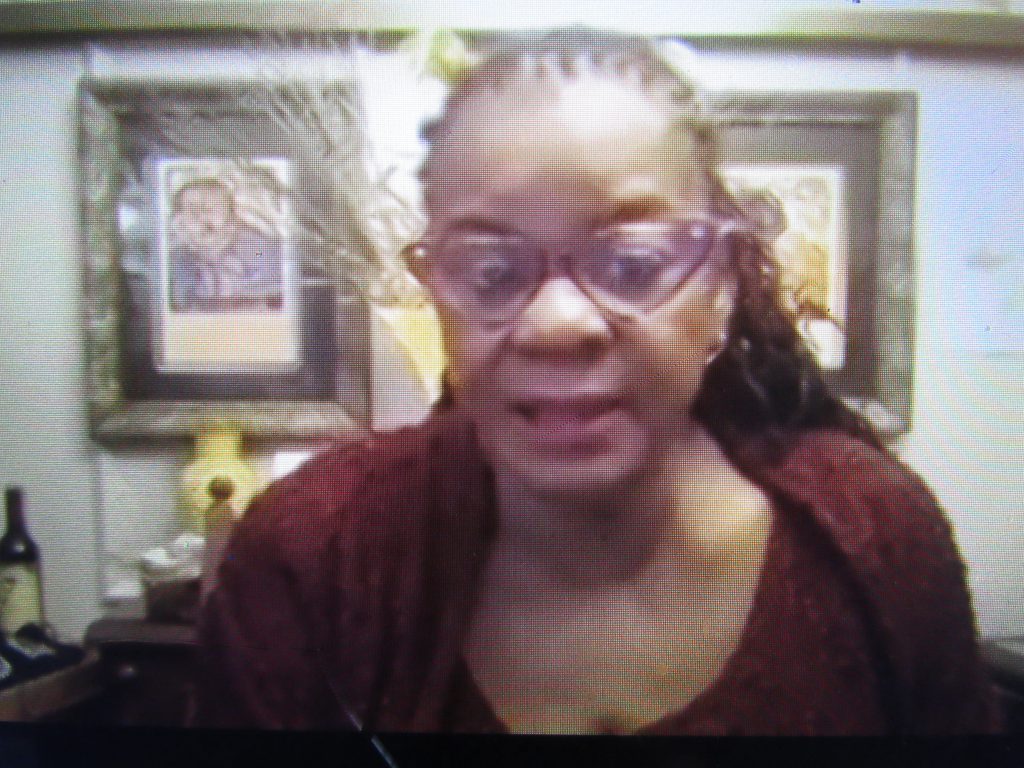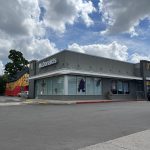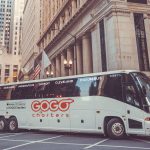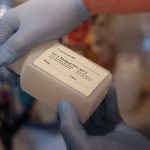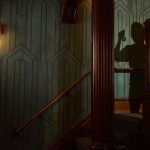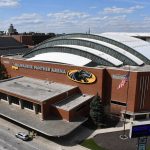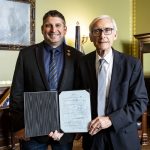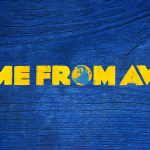Low-income Communities are Hard Hit by COVID-19
Local African-American leaders lament the effect of COVID-19 on their communities.
Congresswoman Gwen Moore (D-Milwaukee) admits, “Yes it’s true that not only in African American communities in Milwaukee, but around the country,” people are experiencing an acute effect from COVID-19. However, she notes, “There is no black gene that causes us to be more susceptible.”
Moore joined elected officials and activists from her home town on a Zoom call April 28, co-hosted by Opportunity Wisconsin and the Milwaukee-based Black Leaders Organizing Communities (BLOC) to discuss the impact of COVID-19 on the African American community — from the uncertainties of employment, education, childcare and general access to healthcare to the fear of catching the virus itself.
A variety of things can make one vulnerable, from having chronic pre-existing conditions to the environment where you live, work or travel. “You’re vulnerable if you live in a very dense population, as African Americans do in Milwaukee County,” she said. “We’re twice as likely to be jam-packed and living with each other.” The congresswoman is quite familiar with that reality, and currently lives in a household of five.
To date, over 2,800 of Wisconsin’s more than 6,500 confirmed cases of COVID-19 have been detected in Milwaukee County. African Americans represent a disproportionate number of positive cases at around 1,100, and 88 of Milwaukee County’s 168 COVID-19 related deaths. By contrast, white residents represent 69 deaths, and 709 of the positive cases. In Milwaukee County, whites represent 55% of the overall population, compared to African Americans at 27%. Although COVID-19 cases have been detected throughout the county, dense clusters are prevalent in the African American North side, and the largely Hispanic South side.
Adrienne Lathan, who accompanied Moore and others on the Zoom call, doesn’t need to be filled in on the latest statistics. The technology support technician for the Milwaukee Public School District is a survivor of COVID-19.
“I was released from the hospital March 31 after six days at Columbia St. Mary’s,” recounted Lathan, who also suffers from asthma. “Four days after being released from the hospital I lost my dad. He had many medical issues, but two days before he passed, he tested positive for COVID.” Lathan credited her level of communication with her primary care physician as a major source of support for her over the last month of hardships. “I see that we [African Americans] don’t have a lot of that.”
“We are also still, if not the most, one of the most segregated cities in the United States,” said Moore. Not only is the City of Milwaukee significantly sectioned off along racial lines, but about only 8% of the county’s African American residents live outside the city limits. The Department of Health Services also notes that in 2008, 69.4% of Wisconsin’s black population lived in Milwaukee County.
Statistics like these helped compel officials to declare racism a public health emergency for Milwaukee County last year. While that may seem abstract, what the declaration attempted to bring to light is demonstrated by how COVID-19 is hitting these same communities.
In Milwaukee, life expectancy can differ by as much as twelve years among zip codes. The high levels of stress caused by inequitable access to work, over-policing, mental health strain, poor nutritional access and other factors all compound the problem. Eventually, this manifests in physical ailments such as heart disease, hyper-tension and other illnesses. So-called environmental racism adds yet another layer of stresses in the form of wide-spread chronic illnesses, like asthma, even among younger people.
Sarah Halpern-Meekin, associate professor at UW-Madison’s School of Human Ecology, says that a driving factor determining which communities are hit by COVID-19 the most are the level of access to resources for those communities before the pandemic.
“Those can be the financial resources people have,” she told Wisconsin Examiner, “people’s access to things like high speed internet … and also the likelihood that you have a job that you can do remotely. So, to what extent are you being called on to do direct-service in-person work during a time where that is a risk to your health?” These factors present further challenges for low-income communities, and particularly African Americans.
“We [African Americans] are really concentrated in the retail sector,” said Moore, “in the service sector.” Due to that fact, not only are African Americans more likely to be in high-exposure environments, or be completely out of work due to the shutdown, but they’re also more likely to be required to travel between their home, job, or other houses to care for loved ones. Moving around outside more also increases their chances of police encounters, where perceived non-essential travel or activity could lead to citations or arrest.
All of this was on Moore’s mind when she heard of the anti-Safer at Home protests in Wisconsin, one of the first of which was held in Brookfield. She noted that Brookfield is part of Waukesha County, one of Wisconsin’s wealthiest counties, “where people can sell their shares online, at home, while someone brings their groceries to their house,” Moore emphasized.
While the protesters called for the reopening of businesses, their communities are just as much at risk in the COVID-19 pandemic as Milwaukee’s inner-city. “Even if you are an upper-class white person, or a middle-class black person, you are still living in a densely populated area, and very likely to run into other people who are infected.”
The differences start to come in once you look at the resources available within these distinct communities. In wealthier areas of the state, residents are less dependent on public transportation, for example. “Public transportation is wonderful, except during a pandemic,” said Moore, “and people are still reliant on public transportation.” People in Milwaukee who depend on bus rides, for instance, now must hope they’re able to even get on, now that buses are not allowed more than 10 passengers at a time.
“We know that experiences like living under stress, or being worried about making ends meet, or living with overt or more subtle racial discrimination can lead people to experience the sort of stress that can change how your hormones are working, and increase your risk of inflammation and other health conditions,” explained Halpern-Meekin. “And as we’re seeing here, when you have these underlying health conditions it raises your risk when your body encounters another health event.”
Nevertheless, while low-income urban communities are hard hit, their rural counterparts also often lack access to various resources. As part of her research, Halpern-Meekin interviewed people from a variety of rural Wisconsin communities, and found a lot of overlap with urban communities in what they struggle with.
Lack of access to jobs, healthcare facilities, internet, education, high prevalence of pre-existing conditions, caring for children or loved ones with special health needs. All of these are ingredients for damaging COVID-19 outbreaks. “We have a lot of people who are losing work,” she explained. “The economy is basically contracting in a way unprecedented since the Great Depression.” Wisconsinites who are in poverty, regardless of demographics, are having to “piece together the basics so that they can get by,” says Halpern-Meekin.
Looking forward, community organizing may be one of the most effective means to hold things together until further aid arrives. In Milwaukee, groups like BLOC have focused on providing accurate information to residents, and checking on the welfare of vulnerable people who live alone.
“Our bread and butter has always been knocking on doors, going out and talking to folks, building those one-on-one relationships, providing people with information where they are,” BLOC organizer Rick Banks explained on the Zoom call. “Unfortunately due to this whole thing, we’ve had to shift our whole operation. So we’ve been doing text messages, phone calls, originally just trying to make sure that people are aware of all the changing rules regarding elections.”
As time went on, however, this task evolved into providing accurate information about the virus itself, and making sure people took the pandemic seriously. “In the mist of that we were also doing a lot of welfare checks and asking people what they need,” said Banks. “And we heard a lot of different things from things like masks, to cleaning supplies,” as well as small business support and concerns about the elderly.
“We’ve been trying to fill in the gaps as much as we can,” said Banks, “and trying to connect people to the resources that are out there.” BLOC isn’t alone, and has been in communication with dozens of community leaders and activists across the county to strategize next steps.
“Moving forward,” said Banks, “we’re excited to continue the advocacy work, making sure we’re continuing to educate people in the community. Not only about what coronavirus is, but how we can continue to brainstorm and think about what it looks like to move forward from this. Not only what government action would look like, but also what community action would look like.”
Reprinted with permission of Wisconsin Examiner.
More about the Coronavirus Pandemic
- Governors Tony Evers, JB Pritzker, Tim Walz, and Gretchen Whitmer Issue a Joint Statement Concerning Reports that Donald Trump Gave Russian Dictator Putin American COVID-19 Supplies - Gov. Tony Evers - Oct 11th, 2024
- MHD Release: Milwaukee Health Department Launches COVID-19 Wastewater Testing Dashboard - City of Milwaukee Health Department - Jan 23rd, 2024
- Milwaukee County Announces New Policies Related to COVID-19 Pandemic - David Crowley - May 9th, 2023
- DHS Details End of Emergency COVID-19 Response - Wisconsin Department of Health Services - Apr 26th, 2023
- Milwaukee Health Department Announces Upcoming Changes to COVID-19 Services - City of Milwaukee Health Department - Mar 17th, 2023
- Fitzgerald Applauds Passage of COVID-19 Origin Act - U.S. Rep. Scott Fitzgerald - Mar 10th, 2023
- DHS Expands Free COVID-19 Testing Program - Wisconsin Department of Health Services - Feb 10th, 2023
- MKE County: COVID-19 Hospitalizations Rising - Graham Kilmer - Jan 16th, 2023
- Not Enough Getting Bivalent Booster Shots, State Health Officials Warn - Gaby Vinick - Dec 26th, 2022
- Nearly All Wisconsinites Age 6 Months and Older Now Eligible for Updated COVID-19 Vaccine - Wisconsin Department of Health Services - Dec 15th, 2022
Read more about Coronavirus Pandemic here


